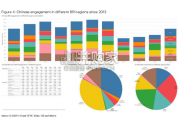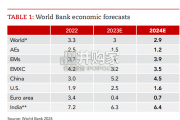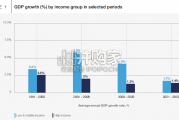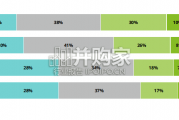China’s financing and investment spread across 61 BRI countries in 2023 (up...
2024-02-27 31 英文报告下载
Oil demand… shows an eventual decline in all scenarios in this Outlook, although the timing and sharpness of the drop vary widely. In the STEPS, demand levels off at 104 mb/d in the mid-2030s and then declines very slightly to 2050. Oil use in road transport increases by around 6 mb/d through to 2030, with a particularly sharp rise in 2021, and it increases by close to 8 mb/d in aviation, shipping and petrochemicals. In the APS, global oil demand peaks soon after 2025 at 97 mb/d and declines to 77 mb/d in 2050. Oil use falls by around 4 mb/d in countries with net zero pledges between 2020 and 2030, but that is offset by an 8 mb/d increase in the rest of the world. In the NZE, oil demand falls to 72 mb/d in 2030 and to 24 mb/d by 2050. By 2030, 60% of all passenger cars sold globally are electric, and no new ICE passenger cars are sold anywhere after 2035. Oil use as a petrochemical feedstock is the only area to see an increase in demand; in 2050, 55% of all oil consumed globally is for petrochemicals.
Natural gas demand increases in all scenarios over the next five years, with sharp divergences afterwards. Many factors affect to what extent, and for how long, natural gas can retain a place in the energy mix when clean energy transitions accelerate, and the outlook is far from uniform across different countries and regions. In the STEPS, natural gas demand grows to around 4 500 bcm in 2030 (15% higher than in 2020) and to 5 100 bcm in 2050. Use in industry and in the power sector increases to 2050, and natural gas remains the default option for space heating. In the APS, demand reaches its maximum level soon after 2025 and then declines to 3 850 bcm in 2050: countries with net zero pledges move away from the use of gas in buildings, and see a near 25% decrease in consumption in the power sector to 2030. In the NZE, demand drops sharply from 2025 onwards and falls to 1 750 bcm in 2050. By 2050, more than 50% of natural gas consumed is used to produce low-carbon hydrogen, and 70% of gas use is in facilities equipped with CCUS.

标签: 英文报告下载
相关文章

China’s financing and investment spread across 61 BRI countries in 2023 (up...
2024-02-27 31 英文报告下载

Though the risk of AI leading to catastrophe or human extinction had...
2024-02-26 51 英文报告下载

Focusing on the prospects for 2024, global growth is likely to come i...
2024-02-21 96 英文报告下载

Economic activity declined slightly on average, employment was roughly flat...
2024-02-07 67 英文报告下载

Economic growth can be defned as an increase in the quantity or quali...
2024-02-06 82 英文报告下载

In this initial quarterly survey, 41% of leaders reported their organizatio...
2024-02-05 66 英文报告下载
最新留言